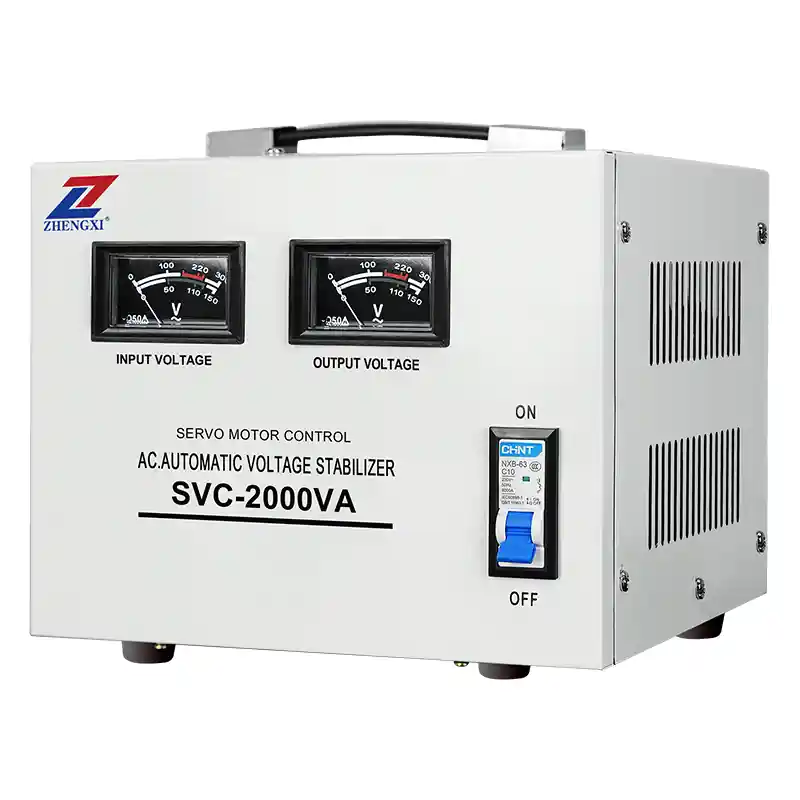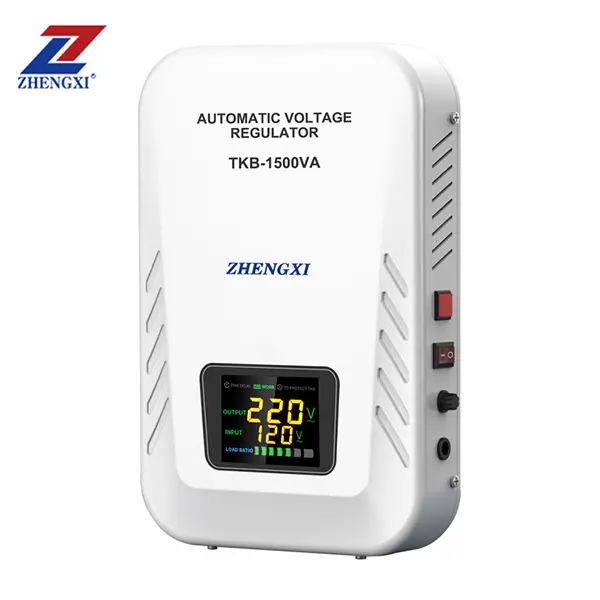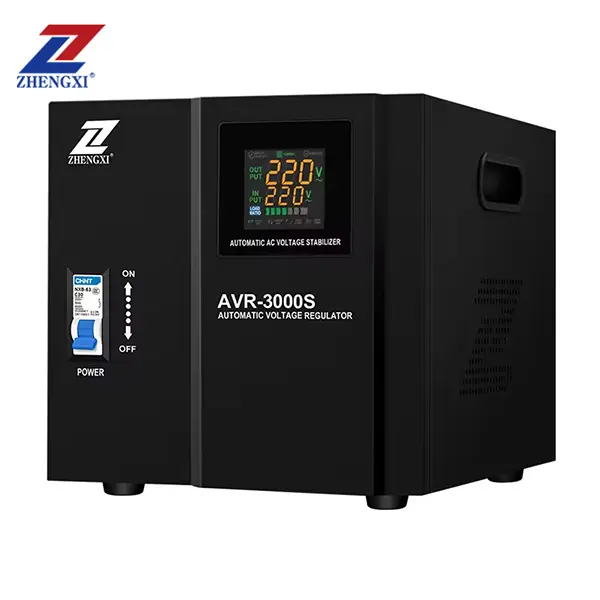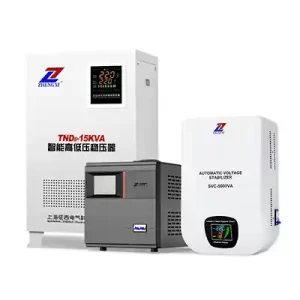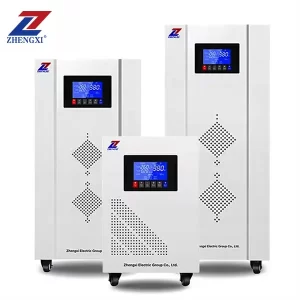Why Your Refrigerator Needs Reliable Voltage Protection
Your refrigerator works tirelessly—24/7—to keep your food fresh, your family healthy, and your energy bills under control. But lurking behind every power outage or sudden spike is a hidden enemy: voltage fluctuations. These can silently damage your fridge’s compressor, ruin its electronic control board, or disrupt cooling performance—often without warning.
An Automatic Voltage Stabilizer (AVS) is your fridge’s first line of defense against such silent threats. This compact but powerful device ensures steady voltage reaches your appliance at all times, safeguarding it from unexpected power disturbances. In this updated guide, you’ll learn how AVS works, why it’s indispensable, and how to pick the right one for your refrigerator.
How Voltage Fluctuations Harm Your Refrigerator
- Voltage Sags/Brownouts: Cause the compressor motor to draw excessive current, generating heat, straining windings and lubrication. It may also stall or hum loudly, significantly reducing cooling efficiency.
- Voltage Surges/Over-Voltage: Overextend the control board components—bulging capacitors, burnt-out relays, or even fried microprocessors. Compressors can overheat, speed up uncontrollably, or suffer insulation failure.
- Cumulative Stress: Even minor fluctuations within “safe” bands can steadily degrade internal components, shortening fridge lifespan.
- Common Causes: Grid instability, nearby lightning, heavy equipment cycling, home wiring issues, or even generator use.
What Does an AVS Do? Real-Time Voltage Correction Explained
The AVS works as an intelligent buffer between your power socket and your refrigerator:
- Voltage Detection: Continuously measures incoming voltage. If it drifts outside safe limits, the stabilizer responds instantly.
- Automatic Adjustment Types:
- Relay-Based Stabilizers: Use fast electromagnetic relays to switch transformer taps. Look for models labeled “High-Speed Relay Switching” to ensure minimal delay and noise.
- Servo Motor (Variac) Stabilizers: Provide smooth, step-free voltage adjustment via a servo-driven coil. They’re quieter and deliver superior regulation—ideal for premium or sensitive fridges.
- Regulated Output: Helps maintain voltage within ±5% to 10% of nominal (e.g., keeping a 220 V fridge between ~198–242 V), regardless of input swings.
Top Benefits of Using a Voltage Stabilizer for Your Refrigerator
- Extended Appliance Life: Protects compressor, control board, and electronics from harmful voltage stress.
- Lower Repair Costs: Avoid expensive failures—fridge compressors and control panels often cost nearly as much as a new fridge.
- Improved Energy Efficiency: A properly powered compressor consumes less energy and operates more effectively.
- Reliable Cooling: Helps maintain consistent temperatures, ensuring food safety and reducing frost buildup.
- Reduced Noise: Eliminates humming and struggling sounds by preventing under-voltage operation.
How to Choose the Right Voltage Stabilizer for Your Fridge
- Power Rating (VA/kVA): Don’t just match running wattage. Factor in the compressor’s startup surge:
- Check the fridge’s rated wattage on its plate.
- Multiply by 5–7× to size for surge current. For example, a 150 W fridge needs at least a 900 VA stabilizer—ideally a 1 kVA unit.
- Voltage Operating Range: Choose a stabilizer that supports a wide input range, at least:
- Minimum: 140–150 V (for brownout protection)
- Maximum: 270–300 V (for spike protection)
- Regulation Accuracy: ±5% is excellent; ±10% is still solid for most fridges.
- Stabilizer Type:
- Relay-Based: Cost-effective and efficient when fluctuations are moderate. Faint clicking is normal.
- Servo-Based: Pricier but near-silent and offers smoother protection—best for premium fridges or unstable grids.
- Essential Features:
- Time-Delay Function: Waits 2–5 minutes after power restoration before supplying current—protects the compressor from short-cycling.
- Overload / Short-Circuit Protection: Prevents damage during fault conditions.
- Cut-Off Limits: Shuts off if input voltage is dangerously low (<100 V) or high (>300 V).
- Digital Display: Allows you to monitor voltage in real time.
- Built-in Surge Protection: Often uses MOVs to handle minor spikes.
- Inverter Fridge Special Case: Even with broader voltage tolerance (often 150–300 V), an AVS is still advised—it smooths irregularities that can stress internal electronics.
Installation Tips: Get the Most Out of Your Stabilizer
- Plug-and-Play: Connect the stabilizer to a grounded wall socket, then plug your fridge into it.
- Avoid Extensions: Use direct wall outlets to prevent voltage drop or interference.
- Placement & Ventilation: Keep on firm, ventilated surface, close to your fridge—avoid damp or enclosed spaces.
- Basic Maintenance: Dust vents occasionally. Check cords for wear. A digital display helps you track inlet fluctuations.
- Safety Reminder: For frequent brownouts or wiring problems, also consult a qualified electrician—AVS cannot fix underlying grid issues.
FAQ: Automatic Voltage Stabilizers for Refrigerators
- Q: Can I use a general-purpose stabilizer?
A: It’s possible, but not ideal. Fridge-stabilizers include tailored features like time-delay and surge handling essential for compressors. - Q: Do inverter refrigerators need AVS?
A: Yes. Although they can handle broader voltages, irregular or rapid fluctuations still cause internal stress. - Q: What if I under-size the stabilizer?
A: It can overload, fail to start the compressor properly, and negate the protection—potentially damaging both the stabilizer and fridge.
Final Thoughts: Don’t Wait for Power Damage—Protect Your Refrigerator Today
Investing in a quality automatic voltage stabilizer for your refrigerator is smart, preventative care. It safeguards your fridge from silent voltage threats, cuts repair bills, and ensures consistent efficiency.
✅ Look for a stabilizer rated for fridge surge loads, with time-delay, wide input range, and a digital voltage display.
✅ Prefer servo-based models for premium protection and quieter operation.
Ready to shield your fridge? Explore our top compressor-stabilizers or contact our experts for tailored advice.

